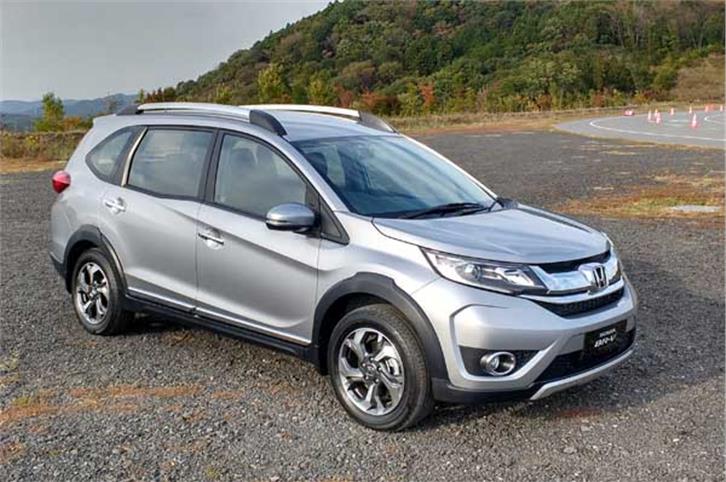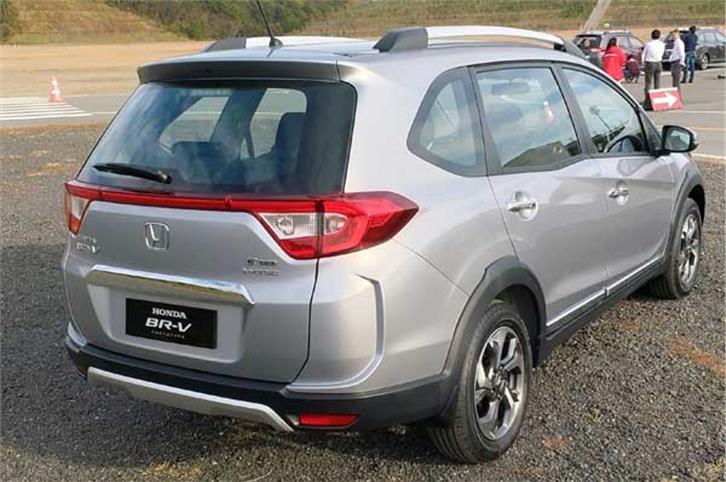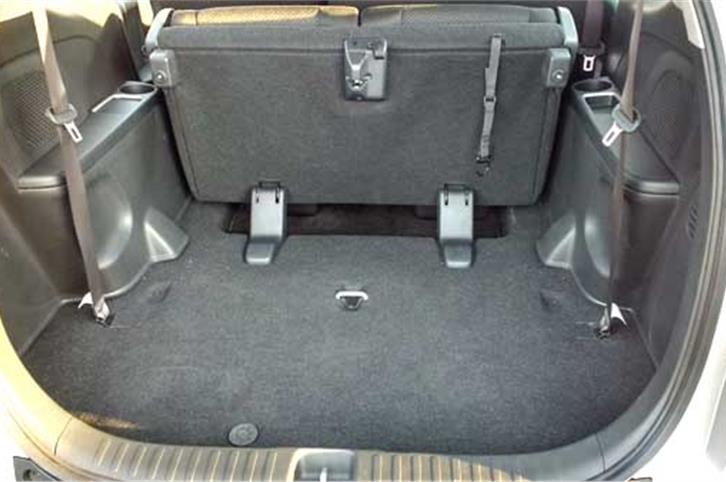Honda BR-V review, test drive
We get our hands on Honda's new BR-V and see if it has what it takes to outdo its rivals.
Published on Oct 27, 2015 05:12:00 PM
69,075 Views
Follow us on



What is it like on the inside?
The BR-V may have lots of parts common with the Brio, Amaze and Mobilio, but thankfully the dashboard isn’t one of them. In place of the plain and frankly Spartan dash found in the aforementioned trio, the BR-V’s dashboard comes from the Jazz. Therefore, the whole cabin looks a lot more premium. Also, the cabin of the BR-V prototype we had with us also boasted superior quality levels than what we’ve seen on Indian Hondas of late. There’s a nice mix of textures on the dash and the general finish is noticeably better, though it’s still not quite at Hyundai Creta benchmark levels.
Either way, the feel from behind the wheel is that of sitting in a jacked-up Jazz. The seating position isn’t all that high but visibility is still good; the high dash top might not be to everyone’s liking. Again, Honda hasn’t revealed final specs just as yet but it’s safe to assume the BR-V will come with a touchscreen infotainment system as the one on our test car. Interestingly, the prototype featured a conventional arrangement for the climate control system rather than the futuristic but distracting touch panel from the City and Jazz. A roof-mounted air-con for the second row is something you can expect too.
Comfort-wise, the BR-V scores well. The slim front seats feel well cushioned and the middle-row seats with their adjustable backrests are quite nice as well, somewhat lack of thigh support notwithstanding. Middle row legroom is good (the seats can be moved back to create more space) and headroom is aplenty, but the BR-V’s cabin isn’t wide enough to seat three abreast in comfort. And that’s when the last row comes handy. Access to the back is decent and space is not bad either; the large windows help this section of the cabin feel reasonably airy too. However, the knees-up seating position means even those who will fit here won’t be happy for too long.
What's it like to drive?
The BR-V sits higher up than the Mobilio MPV and ground clearance is at an impressive 201mm. To compensate for the higher centre of gravity, Honda has widened the BR-V’s front and rear tracks by 25mm each. Honda has also made changes to the suspension. The lower arm of the front suspension has been altered to take on additional loads while there’s a thicker torsion beam at the rear for better stability. The brake discs at the front are updated and now measure 15 inches; the rear still uses drum brakes.
Our drive in the BR-V wasn't very long and was conducted on a Honda test track, but first impressions from behind the wheel suggest that Honda has done an extremely good job. Straightline stability is extremely good to begin with. Yes, the long wheelbase does help and so does the fact that the suspension and chassis have been stiffened, but you are so relaxed behind the wheel, it really is quite impressive. What adds to this feeling of confidence is that the steering system is very direct and has very little slack or play. It has a nice weight to it and this allows you to place the BR-V quite accurately on the road. You do feel the length of the car, especially in tighter corners, and the BR-V does roll a bit too, but get behind the wheel and the car masks its length so well, it is difficult to believe this car is built around the same basic platform as the Brio.
What also helps give you confidence are the bigger brakes. Stopping power is really good and the bite point on the brakes is so well defined, you can just hit them, knowing full well that the BR-V will come to a quick halt, exactly as planned. Judging the ride however proved to be almost impossible. Honda's test track inside its Motegi Circuit Complex is as smooth as a baby's bottom, so the suspension didn't really get a work out.
The BR-V will come to India powered by a pair of engines we are familiar with. Both the diesel and petrol units displace 1500cc and can be found in cars like the City and the Mobilio. The petrol makes a near identical 119bhp, and Honda says it is working to improve the performance of the 100bhp diesel. There's unlikely to be a significant increase in power, but the manner in which power is made is likely to be more user-friendly. Honda could specify both cars with a six-speed manual gearbox.
Copyright (c) Autocar India. All rights reserved.





Comments
Member Login
Personal Details
No comments yet. Be the first to comment.